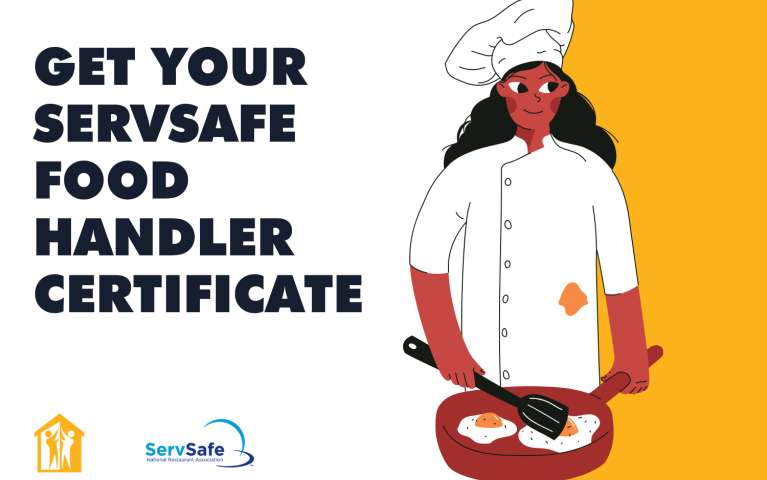Comprehensive Food Handlers Educating for Health and Safety
In today's swiftly evolving food service landscape, comprehensive food trainers training has actually become a critical element for making certain hygiene and safety. By instilling important methods connected to hand health, food storage space, and cleanliness, this training not only alleviates the threat of foodborne health problems but likewise reinforces conformity with regulative requirements. The ramifications of such training extend past simple conformity; they touch upon public health and wellness and consumer depend on. The effectiveness of these training programs can differ dramatically. What elements truly identify their success in promoting a culture of safety and security?
Importance of Food Safety And Security Training

Furthermore, food safety training helps to guarantee that staff members know existing regulations and standards, which are crucial for preserving functional licenses and preventing expensive fines. Regular training sessions likewise act as a system for reinforcing finest practices, therefore reducing the probability of human mistake, which commonly serves as a leading root cause of food contamination.
Additionally, buying food security training can boost a facility's online reputation, as customers progressively focus on dining experiences that mirror high safety requirements. Such positive actions not just secure customers yet additionally add to the lasting success of food companies. In recap, extensive food safety training is an essential aspect of food service procedures, directly influencing both public health and wellness and service sustainability.
Trick Principles of Health
Maintaining high requirements of hygiene is essential in any food taking care of environment to avoid contamination and ensure the safety and security of consumers. The vital concepts of health incorporate numerous important techniques that food handlers need to consistently use.
First, hand health is critical; food trainers ought to wash their hands completely with soap and water before and after handling food, along with after utilizing the restroom or touching any potentially infected surface areas. Second of all, devices and surface areas should be regularly cleaned up and sanitized to eliminate microorganisms. This includes utensils, cutting boards, and counter tops, which need to be maintained in a clean condition.


Correct food storage space is additionally vital; raw foods should be stored independently from prepared or ready-to-eat products to stay clear of cross-contamination. servsafe certifications. Additionally, maintaining suitable temperature level controls is crucial; perishable items need to be maintained risk-free temperatures to inhibit microbial development
Finally, individual health can not be forgotten. Food trainers need to put on tidy apparel, use hair restraints, and avoid functioning when ill. By adhering to these key concepts of health, food handlers can dramatically minimize the risk of foodborne illnesses and advertise a more secure eating experience for all customers.
Common Foodborne Illnesses
Although lots of foodborne diseases can be prevented through appropriate health and risk-free food dealing with methods, they remain a substantial public health problem. Foodborne microorganisms can lead to a range of diseases, varying from light gastrointestinal distress to serious complications and also fatality.
Common foodborne ailments consist of salmonellosis, brought on by Salmonella germs, frequently connected my explanation to undercooked poultry and eggs. One more prevalent health problem is listeriosis, related to unpasteurized dairy products and ready-to-eat meats, which can be specifically dangerous for immunocompromised people and expecting ladies. Norovirus, often gotten from infected food or surfaces, is understood for its fast spread and ability to trigger episodes in public setups.
Escherichia coli (E. coli) infection, notably connected with undercooked ground beef and polluted fruit and vegetables, can lead to serious abdominal aches and kidney failure in some instances. Additionally, Clostridium perfringens, typically located in huge quantities of food that are improperly stored, can cause food poisoning with signs showing up quickly after intake.
Understanding these illnesses is important for food handlers, as understanding can substantially minimize the risk of contamination and safeguard public health and wellness. Proper education and learning and training are essential parts in combating foodborne illness.
Best Practices for Food Handling
Effective food handling practices are vital in avoiding the spread of foodborne illnesses. Appropriate hand hygiene is crucial; food handlers must clean their hands thoroughly with soap and water prior review to and after managing food, especially raw meat or chicken. This easy action dramatically decreases the risk of cross-contamination
Second of all, preserving ideal food storage temperature levels is important. Subject to spoiling products should be kept at or listed below 40 ° F(4 ° C) to inhibit microbial development. Furthermore, prepared foods must be kept above 140 ° F(60 ° C) till offered.
Third, guaranteeing sanitation of surfaces and equipment is essential. Consistently sterilize kitchen counters, cutting boards, and tools, particularly after preparing raw foods. Use separate cutting boards for ready-to-eat and raw foods to even more decrease contamination risks.
Moreover, when preparing food, it is essential to comply with the principle of "very first in, first out" (FIFO) to handle supply effectively and minimize wasting. Last but not least, constantly review and stick to food item tags for secure cooking temperature levels and handling instructions. By executing these best practices, food trainers can significantly boost food safety and security and shield public wellness.
Applying a Security Culture
Creating a security culture within a food handling setting is crucial for fostering a dedication to food security amongst all team member. This society emphasizes the value of food security as a shared obligation, urging workers to focus on health practices consistently.
To implement a security society, companies ought to start by supplying extensive training that attends to food handling protocols, potential risks, and the significance of individual health. Educating sessions ought to be interactive and customized resource to the particular functions of team member, ensuring significance and involvement.
Additionally, leadership plays a critical function in establishing this culture. Administration should model safe methods and communicate the significance of food security frequently. Acknowledging and awarding staff members that promote safety requirements can better enhance these behaviors.
In addition, open communication channels should be developed, allowing staff to report safety worries without concern of consequence. Normal safety and security audits and feedback sessions can aid identify areas for enhancement and reinforce responsibility.
Inevitably, cultivating a safety and security society not only boosts compliance with food security laws yet likewise shields public wellness, fosters staff member spirits, and adds to the overall success of the food handling establishment.
Conclusion
Finally, comprehensive food handlers training plays a pivotal function in promoting health and safety and security within food solution facilities. By furnishing workers with important knowledge about food safety and security concepts, typical foodborne health problems, and finest practices for taking care of food, such training dramatically lowers health and wellness dangers. Promoting a society of safety boosts the establishment's track record and aligns with customer expectations for high security standards, eventually adding to public health and wellness security and the overall success of the food solution sector.
In today's rapidly progressing food service landscape, thorough food trainers training has arised as a critical element for making certain hygiene and security.Food safety and security training is important for maintaining high requirements in food handling and prep work, with researches suggesting that appropriate training can minimize foodborne ailments by up to 30%. In recap, comprehensive food security training is an important element of food service operations, straight influencing both public health and wellness and business sustainability.

Comments on “The Significance of Holding Legitimate ServSafe Certifications in the Hospitality Field”